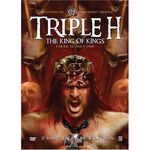hbk
At the suggestion of "Mr Perfect" Curt Hennig, Michaels adopted the nickname "The Heartbreak Kid."[6] Along with his new name came a new gimmick as a vain, cocky villain.[20] He was put together with mirror-carrying manager, Sensational Sherri, who, according to the storyline, had become infatuated with him.[18] Sherri even sang the first version of his new theme music, "Sexy Boy."[1] During that period, Michaels normally wrestled during the first half of live events, and his departure was announced with the words, "Shawn Michaels has left the building" (alluding to the phrase "Elvis has left the building").[21
Michaels failed to win the WWF Intercontinental Championship from Bret Hart in July 1992, even losing against him at a live event in the WWF's first-ever ladder match.[22] He, however, won the title from The British Bulldog on the October 27, 1992 edition of Saturday Night's Main Event, which aired on November 14.[23] Shortly thereafter, he was in a pay-per-view main event for the first time, in which he lost to Hart, for the WWF Championship at the 1992 Survivor Series.[24] Michaels and Hart were moved to the main event after The Ultimate Warrior was unable to compete in the tag team match that involved Randy Savage against the team of Ric Flair and Razor Ramon.[25] During this time, Michaels and Sherri split and he engaged himself in a feud with former tag team partner Marty Jannetty.[6] Michaels lost the Intercontinental Championship to Jannetty on Monday Night Raw on May 17, 1993.[23] He then regained it on June 6 with the help of his debuting "bodyguard" (and off-air friend) Diesel.[1][23]
In September 1993, Michaels had quit the company, after it was announced that he had failed to defend his title enough times during a set period; in reality, he had been suspended for testing positive for steroids – a charge that Michaels denies to this day.[26] After turning down World Championship Wrestling (WCW)'s advances, Michaels returned to the WWF and made several appearances in the United States Wrestling Association (USWA) during a WWF/USWA cross-promotion. He returned to WWF television in November at the Survivor Series pay-per-view, substituting for Jerry Lawler, who was dealing with legal issues, in a match pitting himself and three of Lawler's "Knights" against the Hart brothers, Bret, Bruce, Keith, and Owen.[27]
He soon entered a staged rivalry with Razor Ramon, who had won the vacated Intercontinental Championship, during Michaels' absence.[28] Since Michaels had never been defeated in the ring for the title, he claimed to be the rightful champion and even carried around his old title belt.[28] This feud culminated in a ladder match between the two at WrestleMania X.[28] Michaels lost the match, which featured both his and Ramon's belts suspended above a ladder in the ring.[27][28] This match was voted by fans as "PWI Match of the Year" by Pro Wrestling Illustrated.[6] It also received a 5-star rating from Wrestling Observer Newsletter member Dave Meltzer, one of four WWE matches to do so. Over the next few months, Michaels battled various injuries and launched the Heartbreak Hotel television talk show segment, mainly shown on WWF Superstars.[29]
On August 28, 1994, Michaels and Diesel captured the Tag Team Championship from The Headshrinkers (Samu and Fatu).[30] The next day, at SummerSlam, Diesel lost the Intercontinental Championship to Ramon when Michaels accidentally superkicked Diesel.[27] This triggered a split between Michaels and Diesel, a storyline that was drawn out until Survivor Series that November.[31] Michaels went on to win the Royal Rumble in 1995,[32] which set up a championship grudge match at WrestleMania XI against Diesel (who had gone on to win the WWF Championship from Bob Backlund).[32] As part of the storyline, Michaels recruited Sycho Sid as his bodyguard for the build-up, lost the match,[33] and was attacked by Sid the following night.[34] After this, Michaels took time off,[34] because Vince McMahon wanted Michaels to become a fan favorite.[35]








